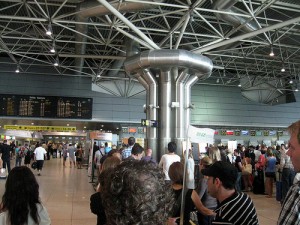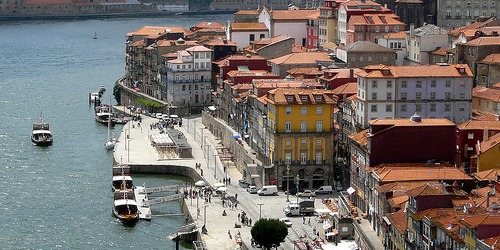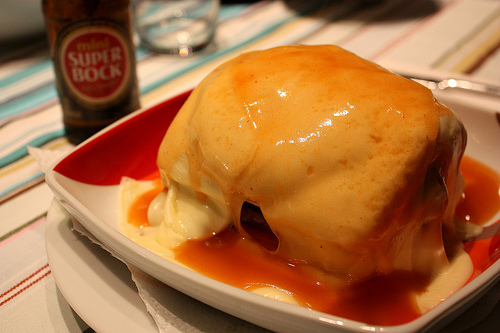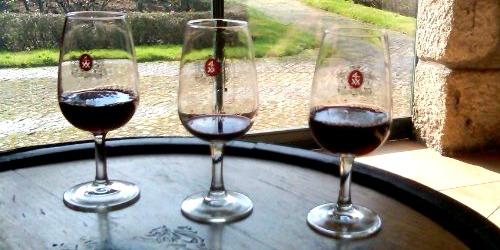 Lisbon is the capital of Portugal and has recently started to gain more and more popularity among travelers. It is one of the rare Western European cities which faces the water and knows how to use this for its own advantage. The intimate alleys, the superb views and the contemporary culture make it a travel destination year round.
Lisbon is the capital of Portugal and has recently started to gain more and more popularity among travelers. It is one of the rare Western European cities which faces the water and knows how to use this for its own advantage. The intimate alleys, the superb views and the contemporary culture make it a travel destination year round.
Porto is the second largest city in the country. It is a busy industrial and commercial central. Its historical city has been awarded World Heritage status by UNESCO in 1996. The historical sites, along with the lovely scenery enchant any traveler.
Those planning a vacation in Portugal most often plan to visit both cities. So knowing how to get between them cheap and easy is a must.
Quick summary
Flying takes less than one hour, but for whatever reason, it’s cheaper to book a return flight between the two cities, rather than a one way flight. Still, for €132 per person you can travel between the Lisbon and Porto. A much better option is the train, which takes 3 hours and is also cheap (from €24 per person, one way).
Flights from Lisbon (airport code: LIS) to Porto
Aeroporto da Portela (airport code: LIS) serves Lisbon and is the largest international airport in Portugal. It is the main hub for TAP Portugal. Sá Carneiro Airport (airport code: OPO) serves Porto and is the 3rd largest airport in the country. The only airline running flights between Lisbon and Porto is TAP Portugal. The flight time is 55 min and the one way adult fare is €148. Return fares start at €132 per person.
>>read more about Cheap Flights to Lisbon
Trains from Lisbon to Porto
The national rail company (CP) offers direct trains from Lisbon to Porto. There are 18 departures daily and the travel time is 3 hours. The trains depart either from Lisboa – Entrecampos or Oriente. The 2nd class (turistica) fares start at €24 for an adult, one way. There are two types of trains to choose from: InterCity and Alfa-Pendular. Tickets can be bought here
>>read more about Train Travel in Portugal
Buses from Lisbon to Porto
Rede Expressos runs buses between Lisbon and Porto. Unfortunately, at the time this article was written neither versions (English or Portuguese) of the website allow us to check the timetable or the prices.
Other website which lists buses from various companies gave the price for the Rede bus: €16.50 for an adult, one way. The trail time is 3 h 30 min.
>>read more about Bus Travel in Portugal
Driving from Lisbon to Porto
Driving from Lisbon to Porto is a real pleasure and you’ll be rewarded with superb views. So, rent a car , get a map and plan your trip. The shortest route is 317 km and you should be able to cover it in 3 hours. Please note that you’ll have to pay tolls.
 Porto is best known as the center of Portugal’s port wine production, and that’s probably what most visitors come for. Yet this charming city on the Douro river, with its colorful houses stacked seemingly on top of one another as the climb the city’s steep hills, is worth a visit even if you aren’t a wine-lover. For a quick taste, plan on 2-3 days, plus another if you plan to take a day trip to the nearby Douro Valley.
Porto is best known as the center of Portugal’s port wine production, and that’s probably what most visitors come for. Yet this charming city on the Douro river, with its colorful houses stacked seemingly on top of one another as the climb the city’s steep hills, is worth a visit even if you aren’t a wine-lover. For a quick taste, plan on 2-3 days, plus another if you plan to take a day trip to the nearby Douro Valley. As in Lisbon and the rest of Portugal, cuisine in Porto relies heavily on fresh fish. Try bacalhau (cod) grilled, broiled, poached, or in a soup, or opt for other popular fish like grilled sardines, horse mackerel, cuttlefish, grouper, turbot, or mullet. Portuguese food also uses a lot of pork and sausage. Try the suckling pig or sausages like “chouriço” or “linguiça.” Alheira, a smoked sausage made of pork, poultry meat, wheat bread and olive oil, seasoned with salt, garlic and paprika, can also be found on menus all over Porto. For a splurge meal and a modern take on traditional local food, make reservations for the dining room at the beautiful Yeatman Hotel. And if you tire of Portuguese food, check out Sitar (one of a handful of restaurants offering international food) for excellent Indian food.
As in Lisbon and the rest of Portugal, cuisine in Porto relies heavily on fresh fish. Try bacalhau (cod) grilled, broiled, poached, or in a soup, or opt for other popular fish like grilled sardines, horse mackerel, cuttlefish, grouper, turbot, or mullet. Portuguese food also uses a lot of pork and sausage. Try the suckling pig or sausages like “chouriço” or “linguiça.” Alheira, a smoked sausage made of pork, poultry meat, wheat bread and olive oil, seasoned with salt, garlic and paprika, can also be found on menus all over Porto. For a splurge meal and a modern take on traditional local food, make reservations for the dining room at the beautiful Yeatman Hotel. And if you tire of Portuguese food, check out Sitar (one of a handful of restaurants offering international food) for excellent Indian food. Porto (or Oporto) is the home of port wine. In the early 1700′s England was at war with France and so the people of England (longing for the delicious wine of France) searched for an alternative. They discovered the wines of Portugal, but quickly realized that the wine was spoiling before it made the long trip from Portugal to England. So the clever Brits devised a method of fortifying the wine to increase its longevity.
Porto (or Oporto) is the home of port wine. In the early 1700′s England was at war with France and so the people of England (longing for the delicious wine of France) searched for an alternative. They discovered the wines of Portugal, but quickly realized that the wine was spoiling before it made the long trip from Portugal to England. So the clever Brits devised a method of fortifying the wine to increase its longevity. Some, like Croft, Wiese and Krohn, and
Some, like Croft, Wiese and Krohn, and  While most people think of Porto (or Oporto) as straddling the Douro river, that’s actually incorrect. Porto is located on the north side of the Douro while the south side, where the port houses are located, is actually called Vila Nova de Gaia. The two cities are connected by a bridge which carries cars, a tram and pedestrians over the river.
While most people think of Porto (or Oporto) as straddling the Douro river, that’s actually incorrect. Porto is located on the north side of the Douro while the south side, where the port houses are located, is actually called Vila Nova de Gaia. The two cities are connected by a bridge which carries cars, a tram and pedestrians over the river. Portugal doesn’t get nearly the recognition it deserves as a culinary and wine destination. In Western Europe, it’s often overlooked for Spain, Italy, and France. But what many people don’t realize is that wine-lovers – especially those on a smaller budget – should be flocking here in droves. Portugal is one of the
Portugal doesn’t get nearly the recognition it deserves as a culinary and wine destination. In Western Europe, it’s often overlooked for Spain, Italy, and France. But what many people don’t realize is that wine-lovers – especially those on a smaller budget – should be flocking here in droves. Portugal is one of the